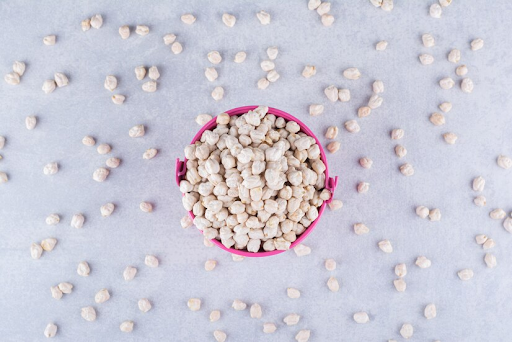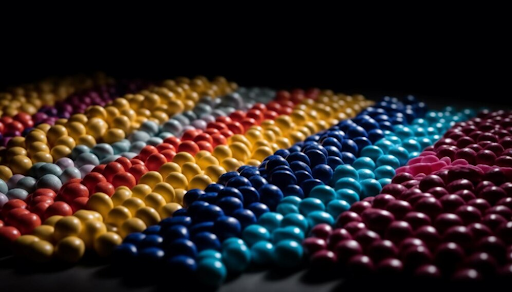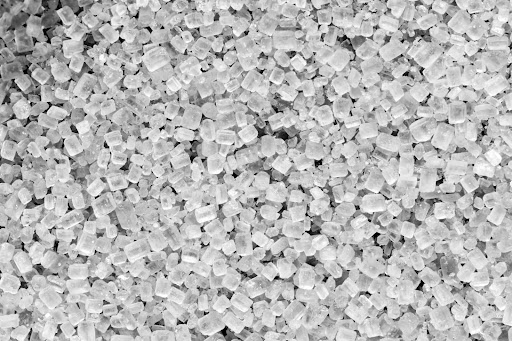Ever wondered how plastic products achieve their bright, consistent white color? The secret lies in white masterbatches—specialized additives that provide opacity, brightness, and improved processing capabilities in plastic manufacturing. Whether used in packaging, consumer goods, or industrial applications, white masterbatches play a crucial role in enhancing the performance and appearance of plastic products. Let’s explore why they are widely used and how they benefit various industries.
What Are White Masterbatches?
White masterbatches are polymer carrier-based concentrated blends of titanium dioxide (TiO₂). They are used to provide whiteness, opacity, and UV protection to plastic items. White masterbatches provide uniform color dispersion in plastics and increase their durability and processing efficiency.
In contrast to the use of direct pigments, masterbatches provide greater control over color consistency with minimal variation between different batches of production. They also enhance the overall performance of the final product by providing greater thermal stability, making them a perfect option for industries that demand accurate and durable color quality.
Apart from TiO₂, white masterbatches can also have processing aids, dispersants, and stabilizers, further adding to their performance. The formulation assists in getting improved melt flow during the processing of plastics, lowering defects, and enhancing the efficiency of the overall manufacturing process.
Benefits of Utilizing White Masterbatches
1. Great Whiteness & Transparency
Titanium dioxide (TiO₂), the main constituent of white masterbatches, offers high brightness and opacity. It makes plastics attain a clean, bright white color without sacrificing transparency or color consistency.
2. UV & Weather Resistance
Plastic products, particularly those used outdoors, need protection from UV to avoid degradation. White masterbatches containing UV stabilizers prevent plastics from yellowing, chalking, and becoming brittle due to sun exposure.
3. Improved Processing & Compatibility
White masterbatches increase the plastics’ processability with more efficient TiO₂ dispersion, minimizing factory faults like streaks or lack of uniform coloring. They find broad compatibility across most polymers, such as PP, PE, PET, PVC, and ABS.
4. Cost-Effective Solution
Rather than applying pure TiO₂ powder, which is often difficult to work with, producers prefer white masterbatches due to their ease of use, higher dispersion, and less wastage. This lowers the cost of production by the manufacturer and provides a uniform quality.
5. Improved Mechanical Properties
Apart from color, white masterbatches enhance the mechanical properties of the plastics by increasing impact strength, thermal stability, and chemical resistance, leading to end products that last longer.
6. Eco-Friendly & Sustainable Solutions
Several producers are currently formulating environmentally friendly white masterbatches with a lower environmental footprint. These replacements reduce waste output and energy consumption, in sync with the increased need for eco-friendly plastic options.
Furthermore, technological advancements in white masterbatch have resulted in low-VOC (volatile organic compounds) variants that help produce better air quality and less environmental pollution.
Applications of White Masterbatches
1. Packaging Industry
- Used in plastic bags, food containers, and bottles to impart uniform white color and opaqueness.
- Provides UV stability in flexible and rigid packaging.
- Exhibits excellent printability for labeling and branding.
2. Household & Consumer Goods
- Used in household appliances, furniture, and home decor plastic objects.
- Used in white-colored household utensils and kitchenware.
- Ensures prolonged durability and abrasion resistance.
3. Automotive & Industrial Applications
- Used in car interiors, dashboards, and trims for enhanced beauty.
- Utilized in industrial applications like pipes, fittings, and storage tanks for high performance and durability.
4. Agriculture & Construction
- Greenhouse films, mulching films, and irrigation pipes are all helped by UV-resistant white masterbatches.
- Construction products such as PVC window profiles and roofing sheets depend on white masterbatches for toughness and weatherability.
5. Textile & Fiber Industry
- Synthetic fibers like polyester and polypropylene employ white masterbatches to give them a bright, uniform color.
- Improves dyeability and enhances the aesthetic appeal of textiles.
White masterbatches also contribute to specialized applications such as non-woven fabrics used in hygiene products like diapers, medical masks, and protective clothing. Their consistent coloration and antibacterial properties make them ideal for these industries.
Choosing the Right White Masterbatch
When selecting a white masterbatch, key factors to consider include:
- Titanium Dioxide Concentration: Higher TiO₂ content results in better opacity and brightness.
- Carrier Resin Compatibility: Facilitates easy blending with the base polymer.
- UV & Heat Stability: Required for exterior use and high-temperature processing.
- Processing Requirements: Facilitates easy dispersion and homogeneous color distribution.
- Regulatory Compliance: Ensure the masterbatch conforms to industry standards, especially for food-contact uses.
Besides, for uses demanding food safety and medical-grade plastic, the selection of white masterbatches that are FDA and EU-compliant is of critical importance.
Conclusion
White masterbatches are a critical ingredient in plastic production, providing enhanced whiteness, UV protection, and economical processing advantages. In packaging, automotive, construction, or consumer applications, these additives improve the appearance and performance of plastic products.
By selecting good-quality white masterbatches, companies can provide consistency, strength, and effectiveness to their manufacturing operations. Moreover, with the development of green plastic solutions, green white masterbatches are increasingly being used, adding to the greener and more sustainable method of plastic production.
As businesses develop, advances in white masterbatch formulation will propel better recyclability, reduced environmental effects, and greater performance, making them an essential option for plastics’ future.






